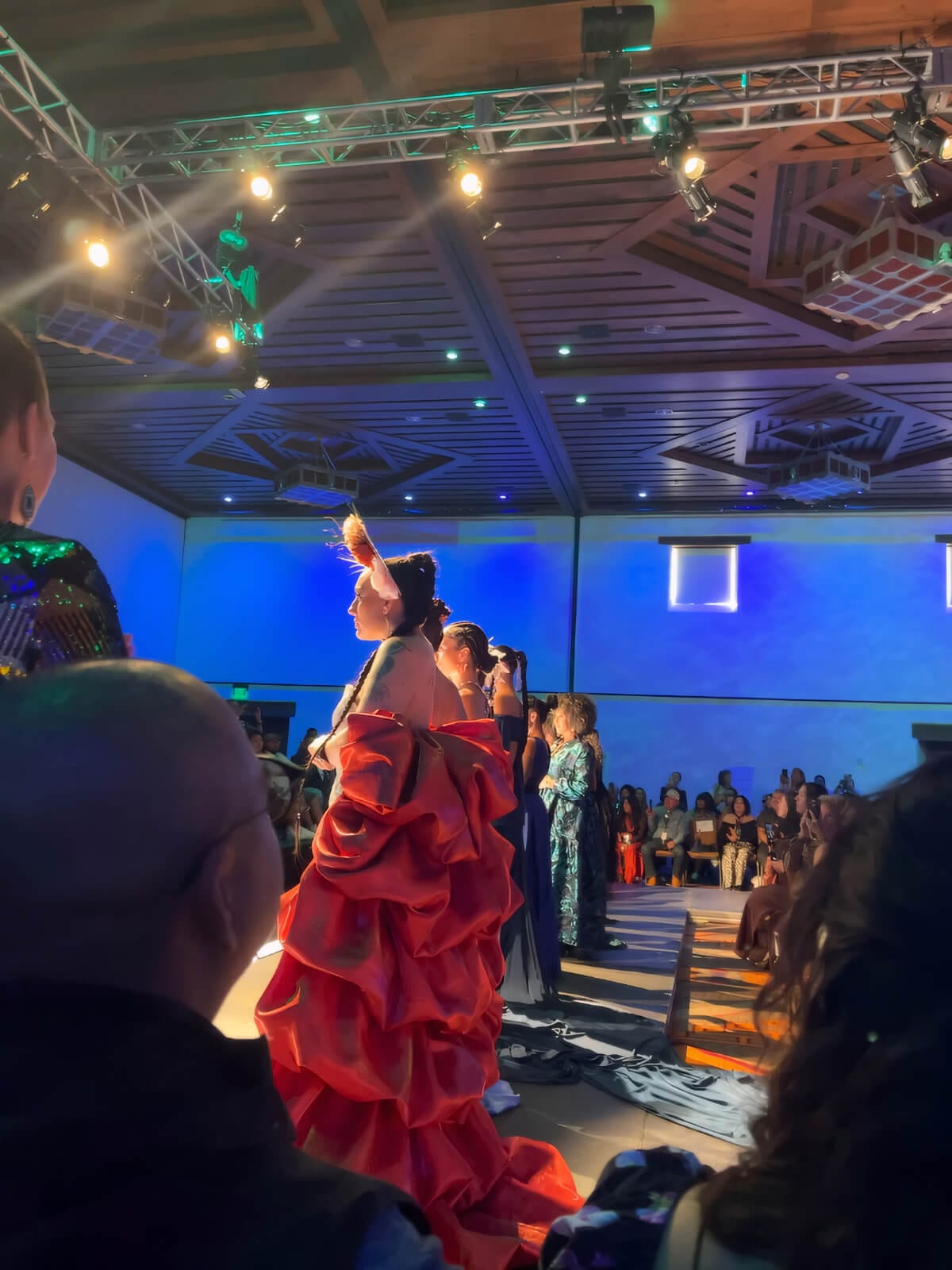Four designers were featured with each presenting about a dozen Native designs, shown on the traditional catwalk raised above an enthusiastic crowd of mainly older white women. We are the audience here, and maybe everywhere in the U.S., for all the art and cultural events, and we earn respect by our understanding and appreciation of what we support.
Native men and women, all young, all beautiful, marched down the runway, pausing to assume the poses we’ve all seen in high fashion shows: hip thrusts, chins slanted, shoulders twisted, proudly prancing feet in very high-heeled white sandals. The women’s clothes were more colorful than the men’s but all were mostly black, the sophisticated color of the big cities, seldom seen in traditional wear.
I felt a twinge of regret at seeing our highly artificial, stylized, routinely sexualized poses, and also a little sad at the scornful expressions which seem to be the only look couture models know to wear. Probably better than simpering but not by much.
But this is the future. Native couture like all the Native arts—pottery, beadwork—has now penetrated the national consciousness and will affect everything we see and buy from now on. A significant win for those so long oppressed.
That history of oppression is boldly expressed in the Western galleries at the Autry Museum of the American West here in Los Angeles, where I’m visiting my son, daughter-in-law, and grandson. The first exhibit I’ve seen anywhere documenting the abuses of the boarding schools into which Native children were herded—against the wills of their families, for many generations—remind me forcibly that my home state, New Mexico, has yet to examine the boarding schools that were located here from the early nineteenth century to the mid-twentieth century or to probe the unmarked graves at these schools of the many children who died there from disease, malnutrition or abuse. At the schools, small children had their long hair cut and were forced into standard U.S. clothes and punished for speaking their languages—stripped of their identity to the degree that the U.S. government and affiliated churches could manage. Canada has been more courageous in moving forward on what is an absolutely essential coming to terms with the past.
It’s interesting though to reflect that it is not the pueblos here who suffered from these abuses who are demanding investigation. Perhaps they know more than we do about letting go of the past.
And speaking of letting go of the past, I surprised myself by shedding a few years as the familiar Pomp and Circumstance poured forth and the radiant young men and women, my grandson’s classmates, paraded in caps and gowns down the aisle. I found myself wondering if perhaps I’d also shed a few years at my own graduation from what was the Louisville Collegiate School for Girls so many years ago.
I don’t remember being so moved as all thirteen of us girls walked down the auditorium in our long white dresses—bride dresses usually—carrying armfuls of red roses, but I was bent on getting out and going east to college and so perhaps the beauty and the ceremony of the tradition escaped me.
If so I’m making up for it now.





Bedazzled Bjeweled Beaded “Birkin” Bag